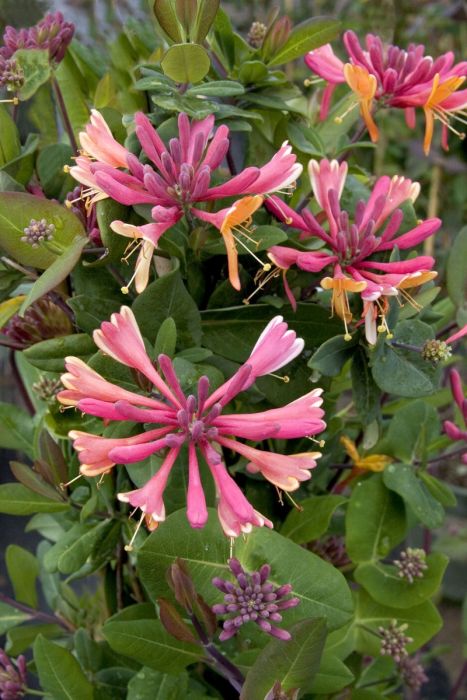Perennial Climbing Vines
If your garden lacks a vertical element, consider perennial climbing vines. Gertens offers a variety of vines such as Clematis, Honeysuckle, and more.



Out of stock
Coming soon, still growingA very popular vine valued for its exceptionally colorful pinkish-red tubular flowers which are produced over a very long period; very easy to grow and not excessively aggressive; a great choice for arbors and trellises
Elevate your landscaping with Gertens' unmatched variety of shrubs! Selecting the right shrubs for your backyard can enhance its beauty and functionality. Consider factors like sunlight, soil type, and mature size when choosing shrubs. For sunny areas, flowering shrubs like roses or hydrangeas can add color and charm. In shady spots, opt for shrubs like azaleas or hostas. Evergreen shrubs provide year-round interest and privacy, while deciduous shrubs offer seasonal color changes. At Gertens, we offer a wide selection of shrubs to suit every backyard need.
Height: 20 feet
Spread: 24 inches
Sunlight:![]()
Hardiness Zone: 5a
Other Names: Everblooming Honeysuckle
Description:
A very popular vine valued for its exceptionally colorful pinkish-red tubular flowers which are produced over a very long period; very easy to grow and not excessively aggressive; a great choice for arbors and trellises
Ornamental Features
Goldflame Honeysuckle features showy clusters of fragrant shell pink trumpet-shaped flowers with yellow overtones and pink edges at the ends of the branches from early to mid spring, which emerge from distinctive cherry red flower buds. It has bluish-green foliage which emerges burgundy in spring. The oval leaves do not develop any appreciable fall color. The fruit is not ornamentally significant. However, the fruit can be messy in the landscape and may require occasional clean-up.
Landscape Attributes
Goldflame Honeysuckle is a multi-stemmed deciduous woody vine with a twining and trailing habit of growth. Its average texture blends into the landscape, but can be balanced by one or two finer or coarser trees or shrubs for an effective composition.
This woody vine will require occasional maintenance and upkeep, and is best pruned in late winter once the threat of extreme cold has passed. It is a good choice for attracting bees, butterflies and hummingbirds to your yard. It has no significant negative characteristics.
Goldflame Honeysuckle is recommended for the following landscape applications;
Planting & Growing
Goldflame Honeysuckle will grow to be about 20 feet tall at maturity, with a spread of 24 inches. As a climbing vine, it tends to be leggy near the base and should be underplanted with low-growing facer plants. It should be planted near a fence, trellis or other landscape structure where it can be trained to grow upwards on it, or allowed to trail off a retaining wall or slope. It grows at a fast rate, and under ideal conditions can be expected to live for approximately 20 years.
This woody vine should only be grown in full sunlight. It does best in average to evenly moist conditions, but will not tolerate standing water. It is not particular as to soil type or pH. It is somewhat tolerant of urban pollution. Consider applying a thick mulch around the root zone in winter to protect it in exposed locations or colder microclimates. This particular variety is an interspecific hybrid.
| SKU | Container Size |
| V0240 | #2 Container (2 Gallon) |
* Not all container sizes may be available at this time. See store for details on specific container size availability.
| Gerten Grown Plants | Gerten Grown Plants |
|---|---|
| Bloom Time | June, July, August |
| Sun Preference | Full-Sun, Part-Sun |
| Mature Height (Range) | 10 - 15 feet, 15 - 25 feet |
| USDA Hardiness Zone | 5, 6, 7, 8, 9 |
| Common Family Name | Honeysuckle |